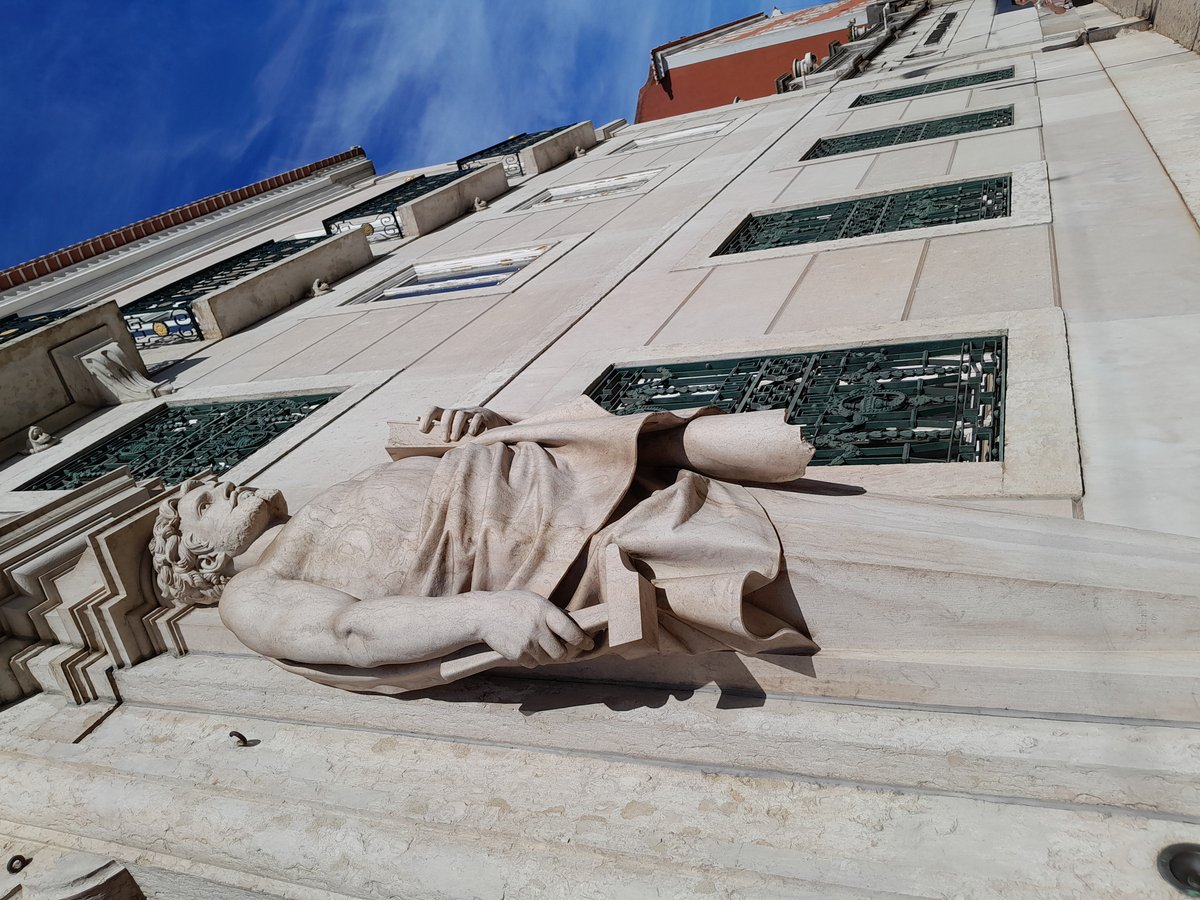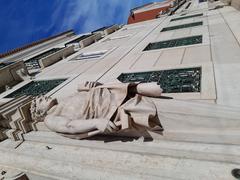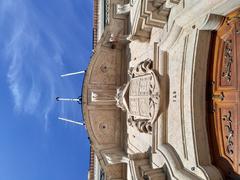
Palace of the Dukes of Palmela, Lisbon: Visiting Hours, Tickets, and Travel Guide
Date: 14/06/2025
Introduction
The Palace of the Dukes of Palmela (Palácio Palmela) stands as a remarkable emblem of Portugal’s aristocratic legacy and architectural splendor. Situated near Largo do Rato in central Lisbon, this neoclassical palace was built in 1792 by the celebrated Crown architect Manuel Caetano de Sousa. Over the centuries, Palácio Palmela has evolved from a private residence of the nobility to the current headquarters of the Portuguese Attorney General’s Office, all while preserving its rich historical and cultural essence.
Although public access to the interior is limited due to its governmental function, the palace opens its doors on special occasions, offering guided tours and cultural events that allow visitors a rare glimpse into its opulent halls and stunning gardens. Its prime location also places it within easy reach of other notable Lisbon landmarks, making it a key stop for anyone seeking to immerse themselves in the city’s noble and urban history.
This comprehensive guide provides up-to-date information on visiting hours, ticketing, accessibility, architectural features, historical context, and practical travel tips, ensuring you make the most of your experience at the Palace of the Dukes of Palmela. For the latest updates, consult official resources and tourism platforms. (Palácio Palmela Official Info, GetLisbon, Lisbon Portugal Tourism)
Table of Contents
- Historical Background
- Visiting the Palace
- Architectural Highlights
- FAQ: Visiting the Palace
- Conclusion
- References and Further Reading
Historical Background
Origins and Construction
Palácio Palmela was commissioned in 1792 by Manuel Caetano de Sousa, an architect acclaimed for his work on Lisbon’s Basílica da Estrela and Palácio da Ajuda. Built on royal concession land adjacent to the Chafariz do Rato, its design exemplifies the transition from Baroque to Neoclassicism, with a symmetrical façade, rectangular windows, and ornate wrought-iron balconies. High-quality masonry and materials sourced from local sites, including the Basílica da Estrela, contribute to its lasting elegance and structural integrity.
Aristocratic Legacy and Ownership
Following Sousa’s death, the palace passed to his son, Francisco António de Sousa, but political turmoil in the early 19th century led to its sale. After Francisco became embroiled in the 1817 Gomes Freire conspiracy and was exiled, the property was auctioned and acquired by Henrique Teixeira de Sampaio. Through marriage, it entered the hands of the influential Dukes of Palmela in 1837, who bestowed upon it their name and enhanced its status as a seat of aristocratic power and culture.
Artistic and Architectural Evolution
The 19th-century Palmela family undertook major renovations, particularly in 1865. The palace’s main portal was adorned with monumental herm sculptures representing Moral Strength and Labor, while the interiors were embellished with neoclassical paintings, trompe-l’oeil, chinoiserie, and traditional Portuguese azulejos. The gardens were expanded with a sculpture pavilion and summerhouse, reflecting the family’s cultivated tastes. Allegorical motifs and the Palmela coat of arms are seen throughout, reinforcing the building’s noble heritage.
Political and Social Significance
Beyond its architectural distinction, Palácio Palmela was a central hub for aristocratic life in Lisbon, hosting lavish events and acting as a venue for political and cultural gatherings. The Palmela family’s mausoleum in Cemitério dos Prazeres—Europe’s largest private mausoleum—underscores their enduring prominence in Portuguese society.
20th Century: Transformation and Preservation
The palace remained a family residence until 1977, when it was acquired by the Ministry of Justice to house the Procuradoria-Geral da República. It briefly accommodated families returning from Portugal’s former colonies during decolonization. Restoration campaigns in the 1980s preserved its artistic and architectural heritage, and it was classified as a Property of Public Interest in 2006 (Wikipedia).
Visiting the Palace
Visiting Hours and Tickets
Palácio Palmela is not generally open for daily public visits. However, it participates in cultural heritage days and special events (such as Lisbon’s Open House), during which guided tours may be offered. Advance booking is strongly recommended for these occasions, as access is limited. Ticket prices for special events typically range from €5 to €10, with discounts for students, seniors, and children. Some events may offer free entry. Always confirm current schedules and ticketing details on official websites or by contacting the tourism office (Lisbon Portugal Tourism).
Accessibility
The palace’s main entrance and immediate grounds are accessible to visitors with reduced mobility, though some historic interior areas may present limitations. For special tours, inquire in advance about specific accessibility arrangements.
Directions and Transport
Palácio Palmela is located at Rua da Escola Politécnica, near Largo do Rato. The nearest metro station is Rato (Green Line), and the area is served by multiple bus routes. Limited street parking is available; using public transport is recommended. Comfortable shoes are advised due to Lisbon’s hilly, cobblestone streets (BeeLoved City).
Nearby Attractions
Combine your visit with nearby sites such as Basílica da Estrela, Jardim da Estrela, and Avenida da Liberdade. Other options include Eduardo VII Park, Praça Marquês de Pombal, and the Museu Nacional de Arte Antiga. The surrounding neighborhoods are known for their vibrant cafes, shops, and local markets (Lisbon Portugal Tourism).
Special Events and Photography
Guided tours during special events provide access to the palace’s grand halls, ornate ceilings, and lush gardens. Non-flash photography is usually permitted in public areas; professional equipment and videography require prior approval. The façade and gardens are particularly photogenic during early morning or late afternoon.
Architectural Highlights
Palácio Palmela’s exterior is a harmonious composition of neoclassical symmetry, rectangular windows, and wrought-iron balconies. The monumental entrance is flanked by herm sculptures and crowned with the Palmela family’s coat of arms. Inside, the palace features elaborate stucco work, painted and illusionistic ceilings, gilded moldings, and decorative tile panels. The gardens, with their sculpture pavilion and summerhouse, reflect the family’s artistic patronage and the era’s refined tastes (GetLisbon).
Frequently Asked Questions (FAQ)
Q: Can I visit the interior of the Palace?
A: The palace is generally closed to the public, but opens for guided tours and events on select dates. Check official schedules for opportunities.
Q: How do I buy tickets?
A: Tickets for special events can often be reserved online or at the venue. Advance booking is recommended.
Q: Is the palace accessible for people with reduced mobility?
A: The exterior and main entrance are accessible; interior access may be limited—confirm in advance for special events.
Q: Are guided tours available in English?
A: Yes, when tours are offered, they are typically available in Portuguese and English.
Q: Can I take photos inside?
A: Non-flash photography is allowed in most public areas during tours; restrictions may apply in sensitive rooms or during private events.
Q: What are the best times to visit?
A: Spring and autumn offer the most pleasant weather and fewer crowds. Early morning and late afternoon provide optimal lighting for photography.
Conclusion
Palácio Palmela is a vital chapter in Lisbon’s aristocratic and architectural history. Its neoclassical façade, sumptuous interiors, and storied gardens invite visitors to explore the interplay of art, politics, and society that shaped the Portuguese capital. While daily access is limited, planning your visit around cultural events or heritage open days will allow you to appreciate its grandeur firsthand. Supplement your experience by exploring nearby landmarks for a richer understanding of Lisbon’s noble legacy.
For up-to-date information, virtual tours, and visitor tips, consult the official Portuguese Attorney General’s Office, Lisbon Portugal Tourism, and curated guides from GetLisbon.
References and Further Reading
- Palácio Palmela Official Info
- GetLisbon - Palmela Palace
- Lisbon Portugal Tourism
- Trek Zone - Palace of the Dukes of Palmela
- BeeLoved City Lisbon Travel Tips
- Wikipedia - Palace of the Dukes of Palmela




























































